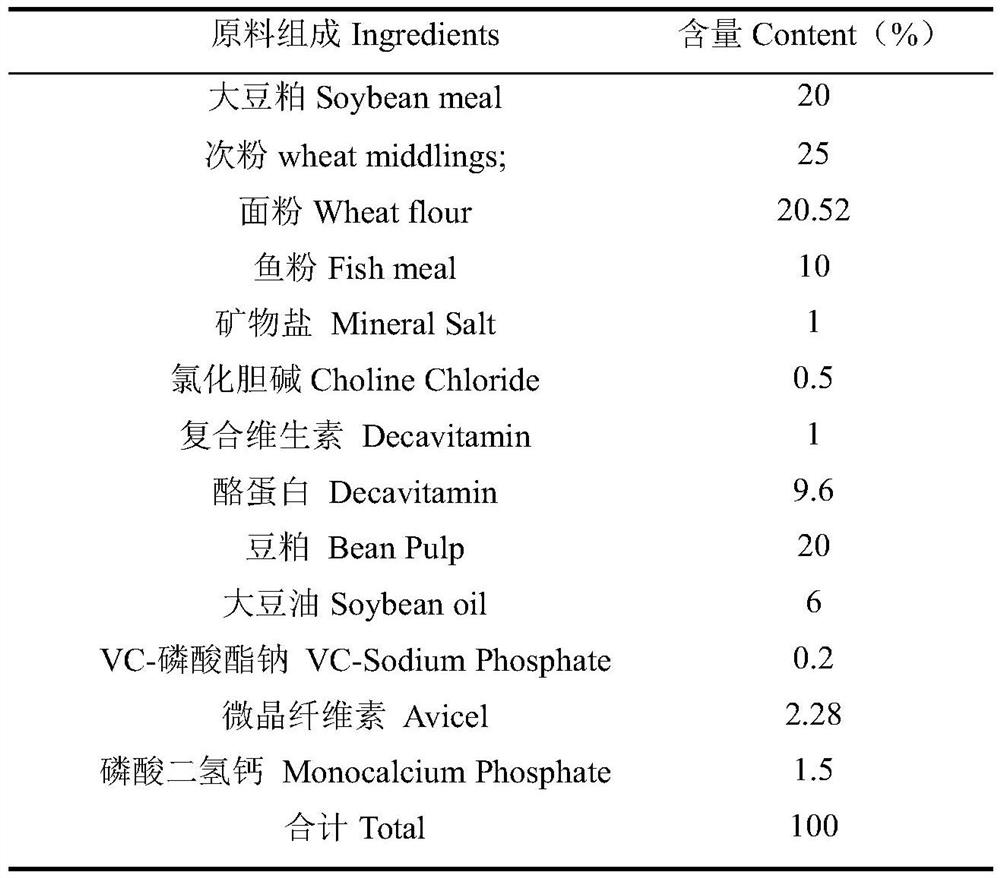A trace element selenium dietary supplement with the function of relieving Salmonella-induced enteritis
A dietary supplement, Salmonella technology, applied to the functions of food ingredients, antibacterial drugs, baked goods, etc., to achieve the effects of improving antioxidant capacity, improving immunity, and inhibiting infection
- Summary
- Abstract
- Description
- Claims
- Application Information
AI Technical Summary
Problems solved by technology
Method used
Image
Examples
Embodiment 1
[0027] Embodiment 1: mouse feed preparation
[0028] Feed preparation method of the present invention such as figure 1 shown.
[0029] Sodium selenite is dissolved in deionized water, then mixed with the feed, and granulated. Weigh 0.15, 0.40, 1.00 and 2.00 mg of sodium selenite respectively, dissolve in 200 mL of deionized water, pour into 1 kg of feed material, mix and granulate. Feeds with selenium content of 0.15, 0.40, 1.00 and 2.00 mg / kg were formed, named as control group, selenium-enriched group, high-selenium group and extremely high-selenium group respectively. They are equivalent to human intake of 50, 200, 400 and 800ug / d. In the enforcement of the present invention, the composition of feed is shown in table 1, table 2 as follows:
[0030] Table 1 Basic Feed Composition and Content
[0031]
[0032] Table 2 Basic Feed Composition and Nutrient Content
[0033]
Embodiment 2
[0034] Example 2: Effects of trace element selenium dietary supplements on tissues of mice infected with Salmonella
[0035] Forty four-week-old SPF mice were randomly divided into 4 groups, 10 in each group. The groups were control group, selenium-enriched group, high-selenium group and extremely high-selenium group. Each group was fed with feeds containing 0.15, 0.40, 1.00 and 2.00 ppm selenium, respectively. The mice had free access to food and water for 2 months. After the end of the two months, all the mice were fasted for 4 hours, and 20 mg of streptomycin was administered through the mouth, and the mice were allowed to eat and drink freely. After being treated with streptomycin for 20 hours, food and water were fasted again for 4 hours. 7 CFU Salmonella typhimurium SL1344. After 48 hours, all the mice were killed and dissected, the spleen and mesenteric lymph nodes (mLN) were washed with normal saline, homogenized in normal saline containing 1% Triton 100, and the ho...
Embodiment 3
[0040] Example 3: Effects of trace element selenium dietary supplements on the antioxidant capacity of mice
[0041] According to the mouse experiment described in Example 1, after the end of the experiment, the mice were sacrificed by taking blood from the eye sockets, and the livers of the mice were washed with pre-cooled physiological saline and homogenized. Determination of antioxidant indicators such as SOD (superoxide dismutase), MDA (malondialdehyde) and T-AOC (total antioxidant capacity) in the liver. The test results are shown in the table below.
[0042] Table 4 Determination of antioxidant activity in mouse liver
[0043]
[0044] Note: * indicates that there is a significant difference between this group and the control group, p<0.05; ** indicates that there is a very significant difference between this group and the control group, p<0.01.
[0045] After Salmonella invades the body, it will secrete endotoxin through its own metabolism and increase the oxidativ...
PUM
 Login to View More
Login to View More Abstract
Description
Claims
Application Information
 Login to View More
Login to View More - R&D
- Intellectual Property
- Life Sciences
- Materials
- Tech Scout
- Unparalleled Data Quality
- Higher Quality Content
- 60% Fewer Hallucinations
Browse by: Latest US Patents, China's latest patents, Technical Efficacy Thesaurus, Application Domain, Technology Topic, Popular Technical Reports.
© 2025 PatSnap. All rights reserved.Legal|Privacy policy|Modern Slavery Act Transparency Statement|Sitemap|About US| Contact US: help@patsnap.com



